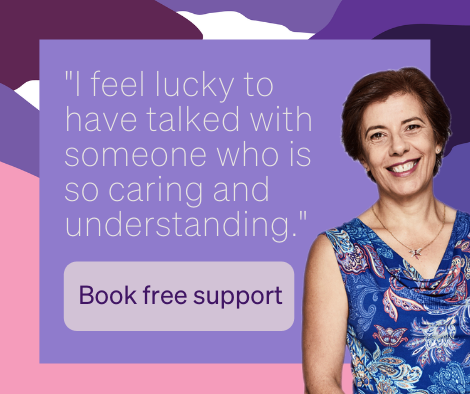Amanda was relieved when doctors told her mum, who’d been diagnosed with uterine cancer several months earlier, there was nothing more they could do. “My mum was a powerhouse,” she says. “I knew she would fight because that was her nature. When the doctors said that, it took the pressure off and helped her to a place of acceptance.”
For Amanda and her mum, the next step was considering what the final weeks of her life should look like. “I knew Mum's wishes. We were never shy of having difficult conversations. Women have birth plans for babies, and I feel like leaving this life is birthing into the next, so I helped mum create a ‘rebirth plan’.”
Exploring her mum's end of life wishes helped them both make the most of the remaining time.
Dying at home
Amanda’s mum had been in hospital for several weeks and going home was important to her. “Even though we knew we were taking mum home to die, it was beautiful giving her what she wanted,” Amanda says.
Amanda moved in to care for her mum, bringing her three sons with her. A hospital nurse had talked to Amanda about what happens at the end of life. “She explained about the death rattle and not to get scared because that's normal,” she says. “She helped us prepare for what was ahead.”
Home nurses supported Amanda with things like turning her mum in bed and teaching her how to give morphine. They also encouraged Amanda to take time out and care for herself. “It got to the point where I hadn't showered for a couple of days. The nurse walked in one morning and said, ‘Please don't take this the wrong way, but I think you need to shower. Your mum will be fine for 10 minutes’.”
Choosing who can visit
Also crucial was controlling visits from friends and family. “People you haven't seen for ever want to come and say their goodbyes. It got to the point where Mum said she didn't want that anymore.”
In the hospital, they also decided on who she didn't want to see at all. “I have a brother that's estranged, and mum didn’t want him coming to the house. I said ‘you don't have to worry about it. If anyone has a problem, they have to go through me.’
“That was all part of what she wanted for her end of life and how she wanted to leave the world.”
End of life considerations
Amanda’s mum was also clear about not wanting her grandsons there when she passed away. “Mum was really involved with raising them and wanted to be remembered that way. She was also worried it would upset them.”
Her mum had also hoped to write letters to loved ones, but when it became clear this wouldn’t happen, Amanda used her phone to record video messages instead.
The pair also discussed funeral arrangements and her mum’s wishes to not be resuscitated. She died at home 10 months after her diagnosis. “I feel like Mum had a really beautiful death,” Amanda says. “She died happy and at peace. She was in her own bed and that's how she wanted it.”
Have the conversation
Amanda says making the plan while her mum was still able to really helped. “It prepared me to support mum and give her the send-off she wanted. Having those conversations and writing things down is so important.”
For some people, this might involve going through an advance care planning process and creating an advance care directive. Amanda used a simple notebook to write down what they discussed.
She describes caring for her mum at the end of life as an honour. “This was the woman that birthed me and saw my first breath. It was such a privilege to be there for her last breath. It was a full circle moment.”
Amanda is now Violet’s Concierge. Her first-hand experience means Amanda understands some of the challenges that go along with caring for someone with a terminal illness, or who is elderly and frail.
“Everyone's story might be different but there are many parallels,” she says. “Other people are going through the same things as you and you're not alone. Violet is here to help.”






